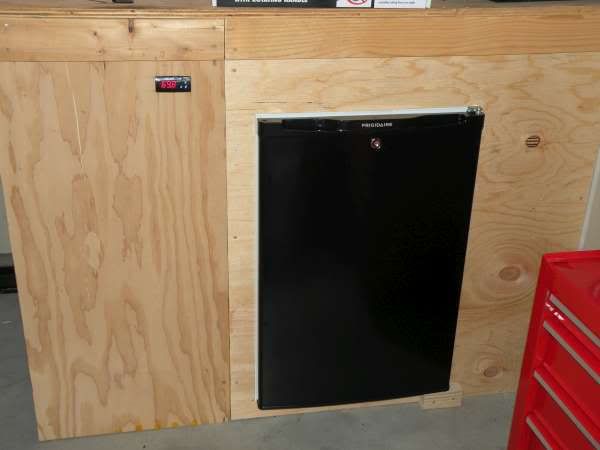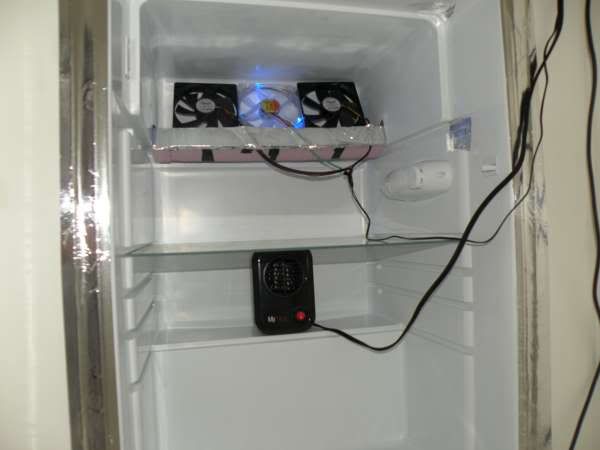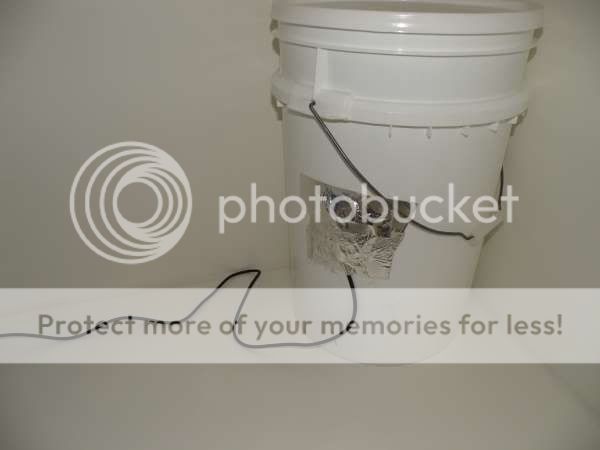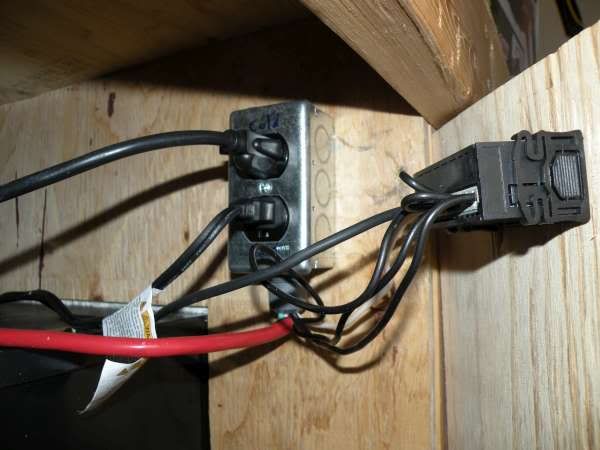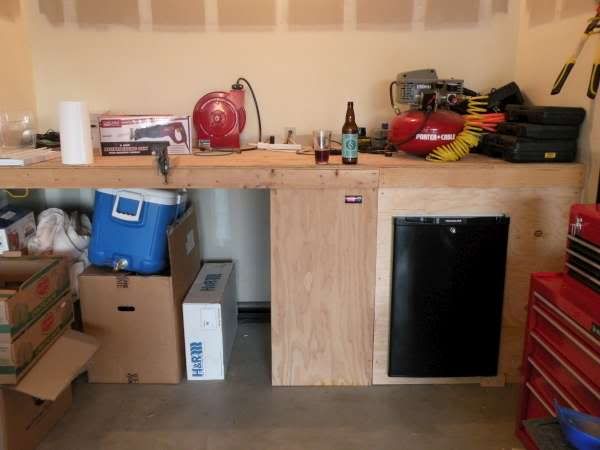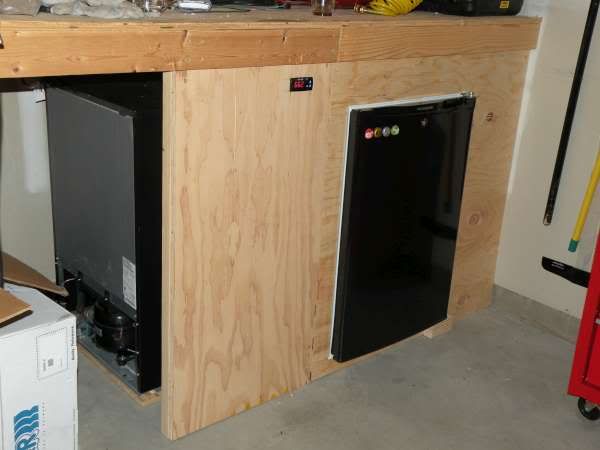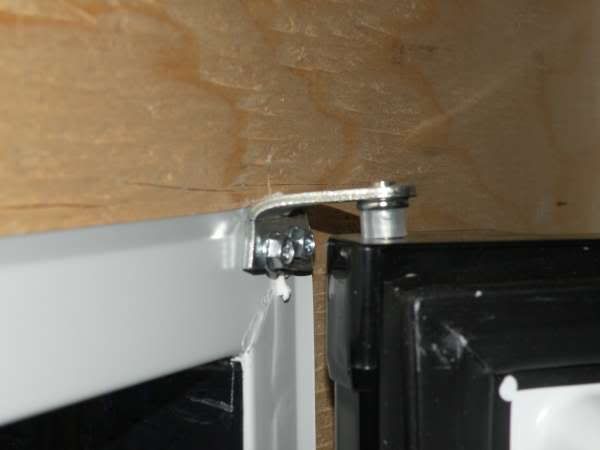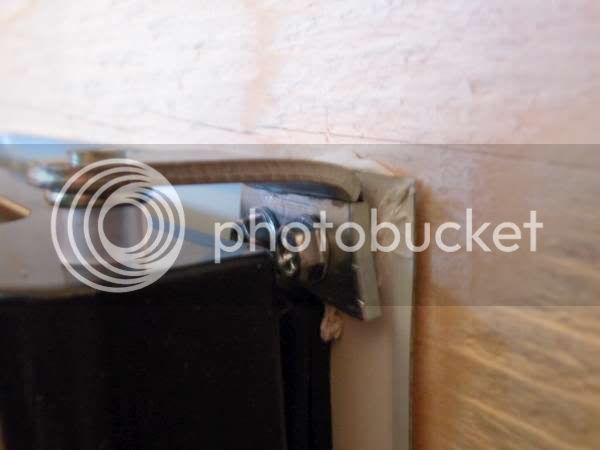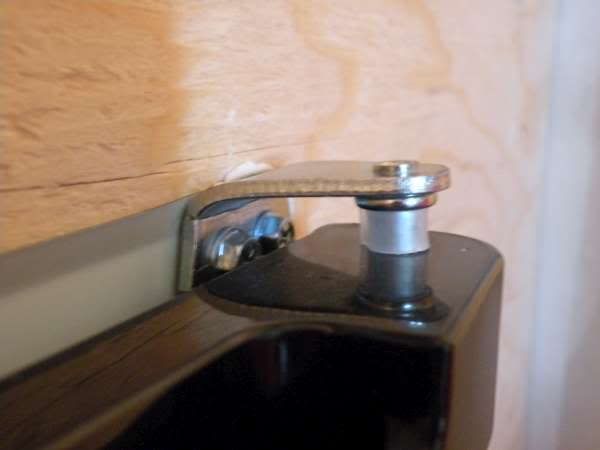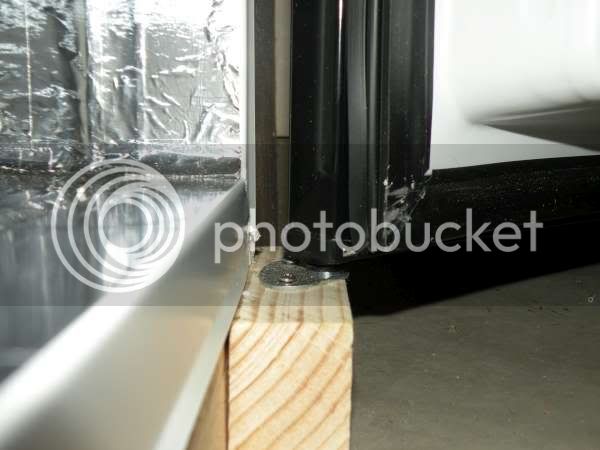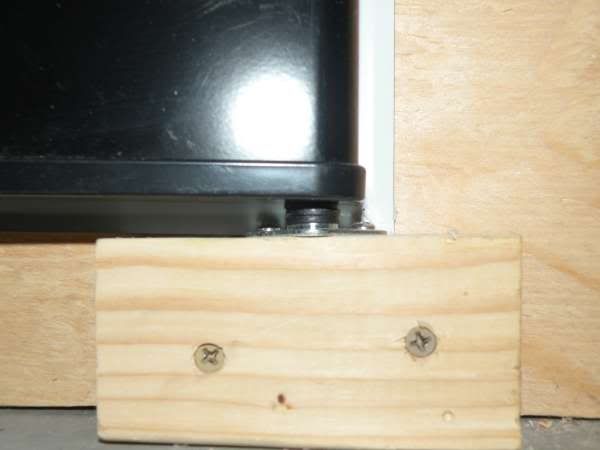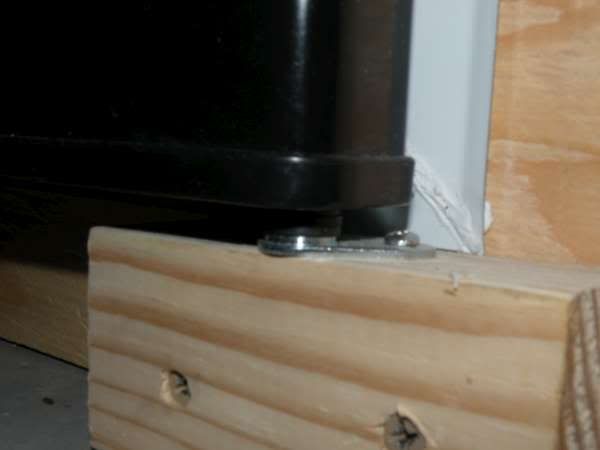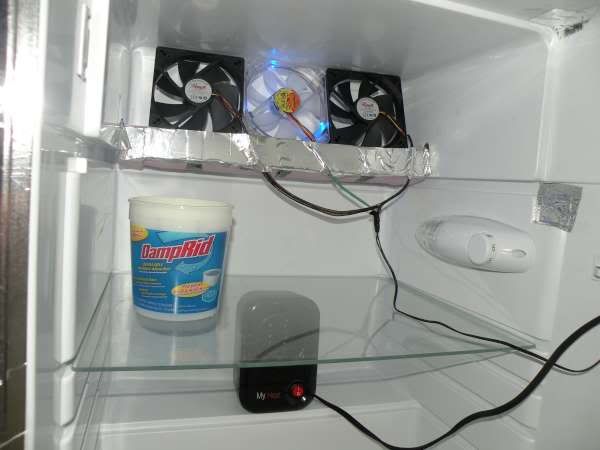chumpsteak
Well-Known Member
A buddy and I just started brewing a couple months ago and have officially gone off the deep end with this new hobby. After 2 extract batches we went to all grain. After 1 all grain batch we bought a new 15 gallon kettle. After the 4th all grain batch we decided we needed somewhere better to ferment than the exercise room of his house, and so the idea of building a fermentation chamber came up.
My wife didn't really like the idea of another fridge/freezer in the garage, so after looking on the HBT forums I decided to clean the crap out from underneath the work bench and build a chamber there.
Step 1 was finding a cooling source. Since my garage gets to around 100 degrees some days in the summer it was important to find something big enough to cool yet still fit under the workbench. I decided a 4cf mini fridge ought to work so I set out looking for one.
After a couple weeks of looking I got really lucky and got an almost brand new frigidaire mini fridge for 50 bucks on craigslist. The guy had just spent almost 200 on it 2 months ago but needed to get rid of it.
Its a super nice mini fridge and I feel kind of bad about basically destroying it, but it had to be done. If I was ready for kegging I'd have built a kegerator out of it instead.
Anyway, the next weekend I went to home depot for materials and got to work.
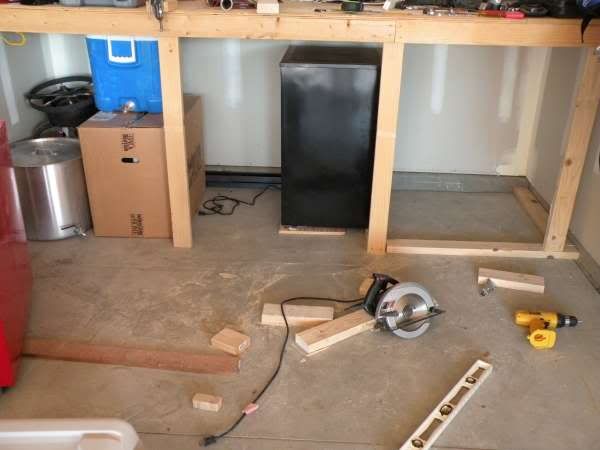
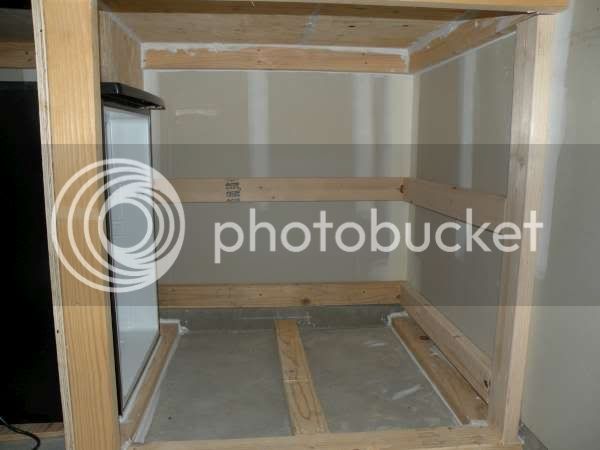

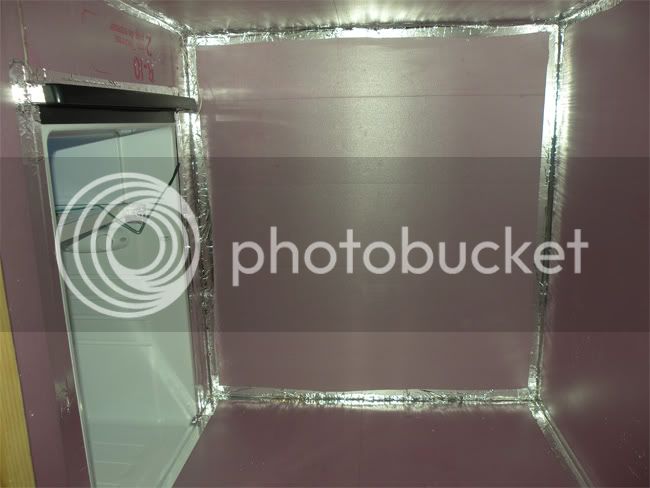
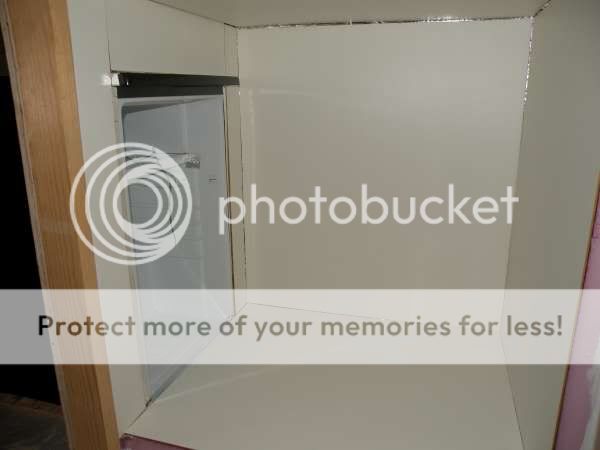
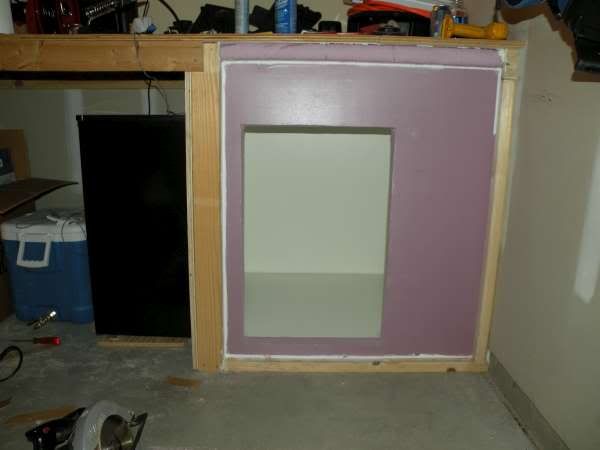
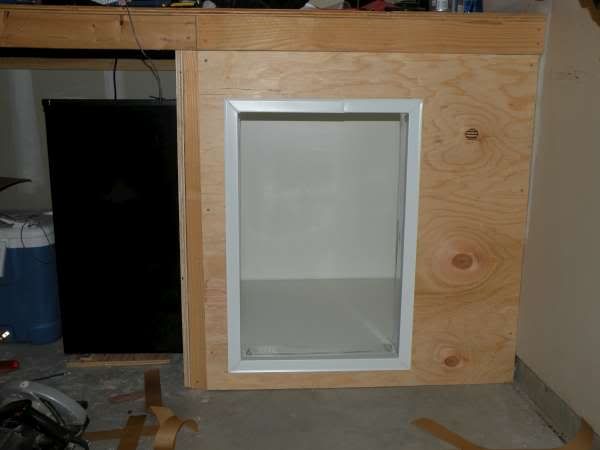
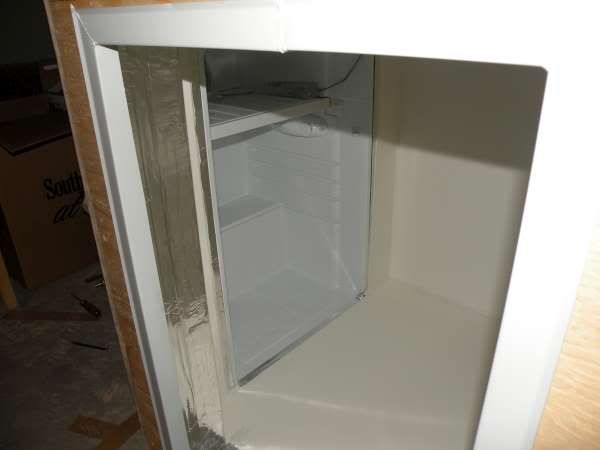
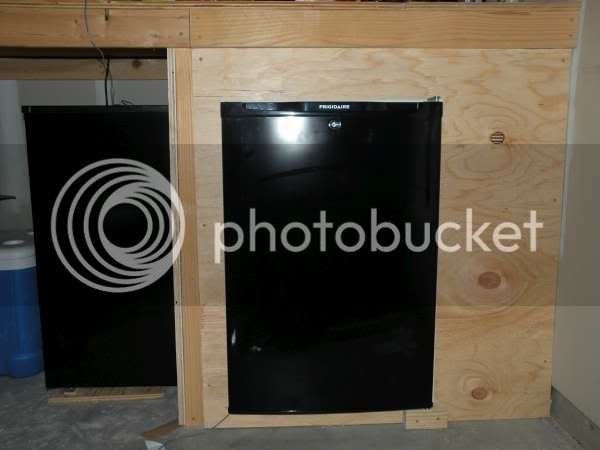
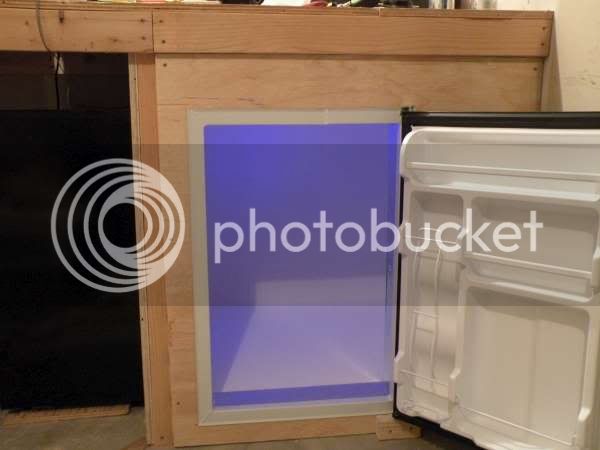
My love 2 stage controller will be here this week, so I hope to have it installed and controlling temps by next weekend.
The space is a little bigger than I originally wanted, but I decided if I made it as airtight as possible and insulated it really well with 2in foam it would probably work. I can fit at least 5 buckets/carboys in it and yesterday I had a jar of water cooled down and stabile at 41 degrees with a fridge temp of 37 in a 85 degree garage. Not too bad considering I really only built it for fermenting ales at 64. With the fridge set to it's highest temp setting the chamber stabilizes around 57 degrees and the compressor barely runs.
Right now I only have 1 pc fan running in there, but I ordered 2 more higher cfm fans to hopefully circulate for air and make the chamber more efficient at cooling. Also ordered a little personal ceramic heater that will be used later this year to help maintain temps when the ambient temp drops.
Anyway, thanks for looking and let me know if there are any questions.
I'd also like to thank everyone who posted their builds and provided lots of ideas and inspiration for this project. Almost none of the ideas used to build this chamber were my own. All were pretty much taken from this forum. I'm new to this hobby, but thanks to you guys I feel like I've already learned so much.
My wife didn't really like the idea of another fridge/freezer in the garage, so after looking on the HBT forums I decided to clean the crap out from underneath the work bench and build a chamber there.
Step 1 was finding a cooling source. Since my garage gets to around 100 degrees some days in the summer it was important to find something big enough to cool yet still fit under the workbench. I decided a 4cf mini fridge ought to work so I set out looking for one.
After a couple weeks of looking I got really lucky and got an almost brand new frigidaire mini fridge for 50 bucks on craigslist. The guy had just spent almost 200 on it 2 months ago but needed to get rid of it.
Its a super nice mini fridge and I feel kind of bad about basically destroying it, but it had to be done. If I was ready for kegging I'd have built a kegerator out of it instead.
Anyway, the next weekend I went to home depot for materials and got to work.










My love 2 stage controller will be here this week, so I hope to have it installed and controlling temps by next weekend.
The space is a little bigger than I originally wanted, but I decided if I made it as airtight as possible and insulated it really well with 2in foam it would probably work. I can fit at least 5 buckets/carboys in it and yesterday I had a jar of water cooled down and stabile at 41 degrees with a fridge temp of 37 in a 85 degree garage. Not too bad considering I really only built it for fermenting ales at 64. With the fridge set to it's highest temp setting the chamber stabilizes around 57 degrees and the compressor barely runs.
Right now I only have 1 pc fan running in there, but I ordered 2 more higher cfm fans to hopefully circulate for air and make the chamber more efficient at cooling. Also ordered a little personal ceramic heater that will be used later this year to help maintain temps when the ambient temp drops.
Anyway, thanks for looking and let me know if there are any questions.
I'd also like to thank everyone who posted their builds and provided lots of ideas and inspiration for this project. Almost none of the ideas used to build this chamber were my own. All were pretty much taken from this forum. I'm new to this hobby, but thanks to you guys I feel like I've already learned so much.
























































![Craft A Brew - Safale S-04 Dry Yeast - Fermentis - English Ale Dry Yeast - For English and American Ales and Hard Apple Ciders - Ingredients for Home Brewing - Beer Making Supplies - [1 Pack]](https://m.media-amazon.com/images/I/41fVGNh6JfL._SL500_.jpg)
